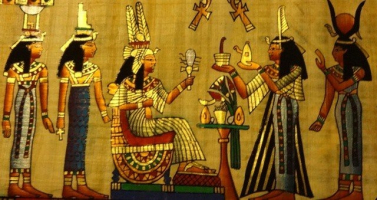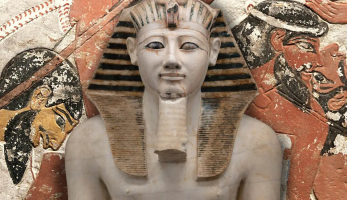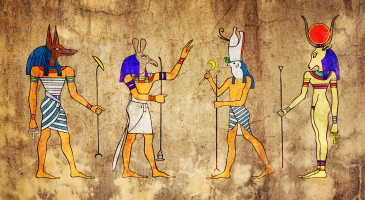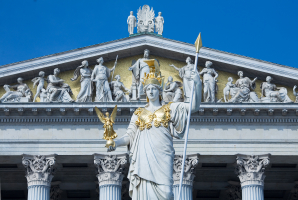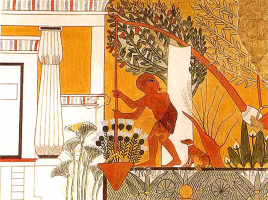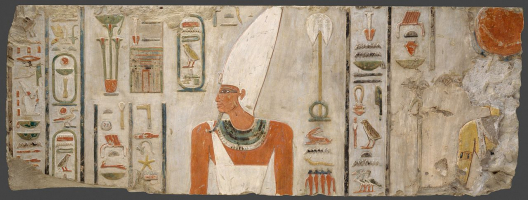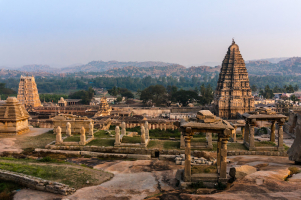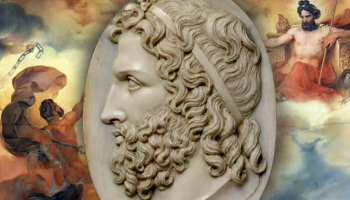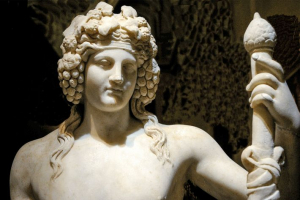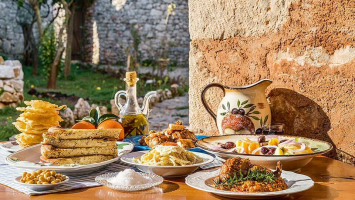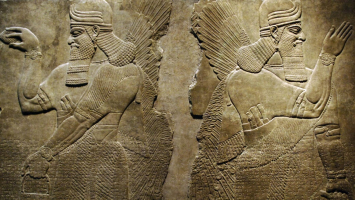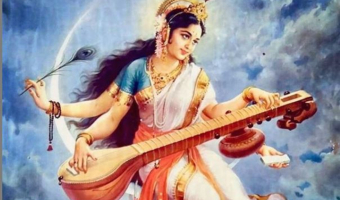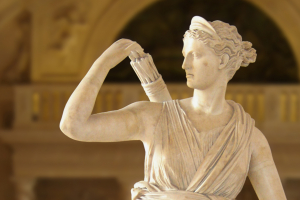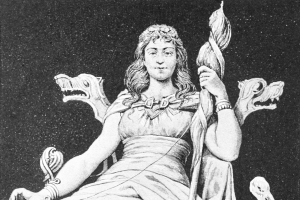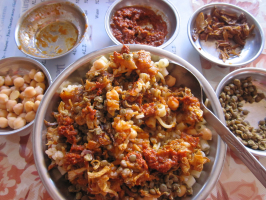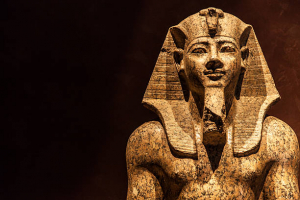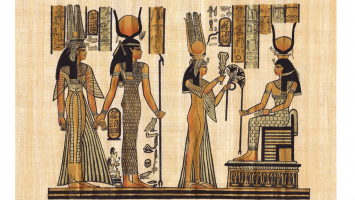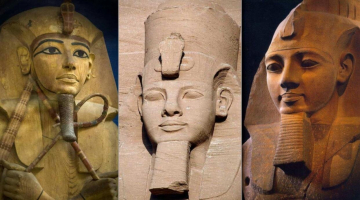Top 10 Most Potent Ancient Egyptian Goddesses
The pantheons of celestial beings in ancient Egypt were the most intricate in the ancient world. They revered Egyptian deities that took the form of mothers, ... read more...cats, crocodiles, the sun, and the cosmos, among other things. Every deity was connected to a natural occurrence. For instance, the goddess Hathor was connected to the Mother Goddess, dance, music, and intoxication. Also known as the goddess of balance and harmony, Goddess Ma'at. Egyptian painting methods were used to create distinctive representations of each deity. Despite having similar looks, they were identified by a certain spot on their heads. The top 10 most potent ancient Egyptian goddesses associated with notable natural phenomena are compiled in this article.
-
Mut was a powerful heavenly mother and a sky god in ancient Egyptian mythology. She was typically depicted as a female, frequently with wings or as a vulture, and typically donning a royal crown.
She was frequently shown with the Egyptian double crown or the vulture headdress worn by New Kingdom monarchs.
Egyptians first revered Mut as their native goddess. Nevertheless, she finally surpassed God Amun as the Queen of all the gods, and throughout the New Kingdom, her spouse was regarded as the most powerful national deity.
Mut was one of numerous composite deities adored and was connected to several goddesses, including Isis and Nut. Together with Isis and Nekhbet, she produced the god "Mut-Isis-Nekhbet, the Great Mother and Lady."
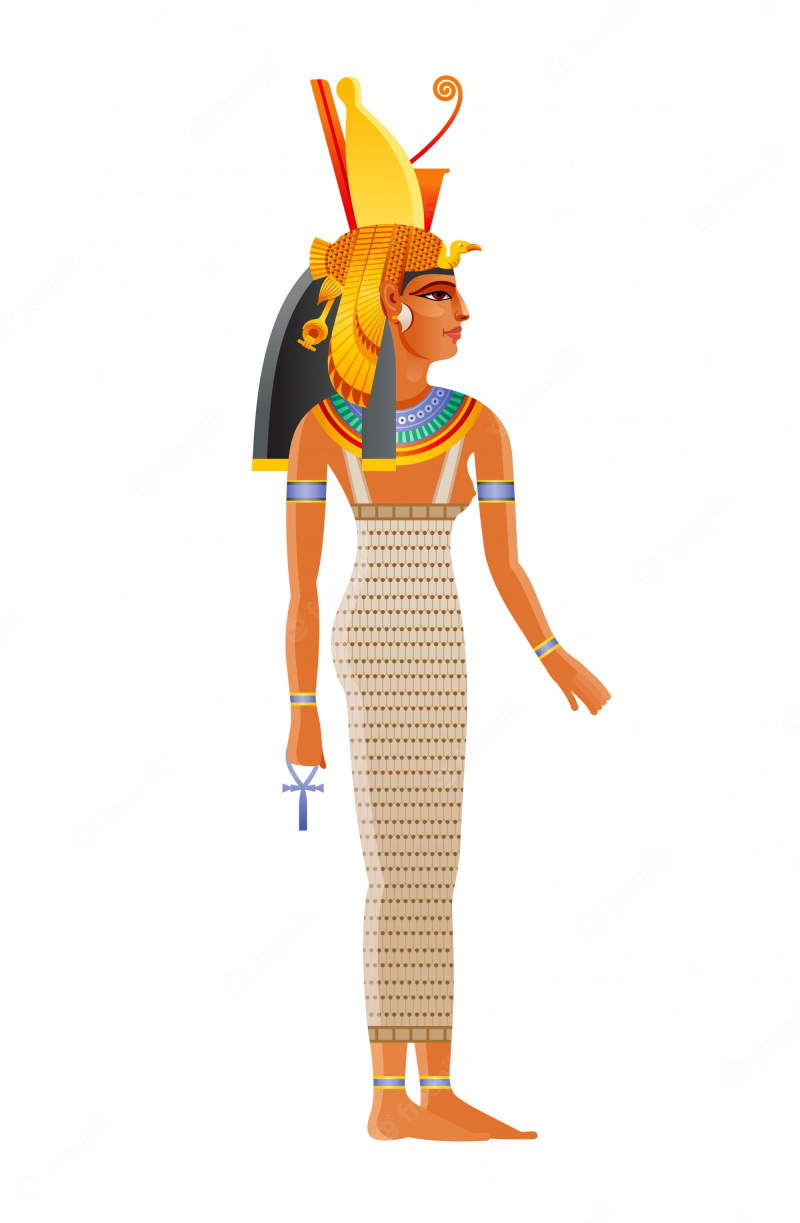
Freepik 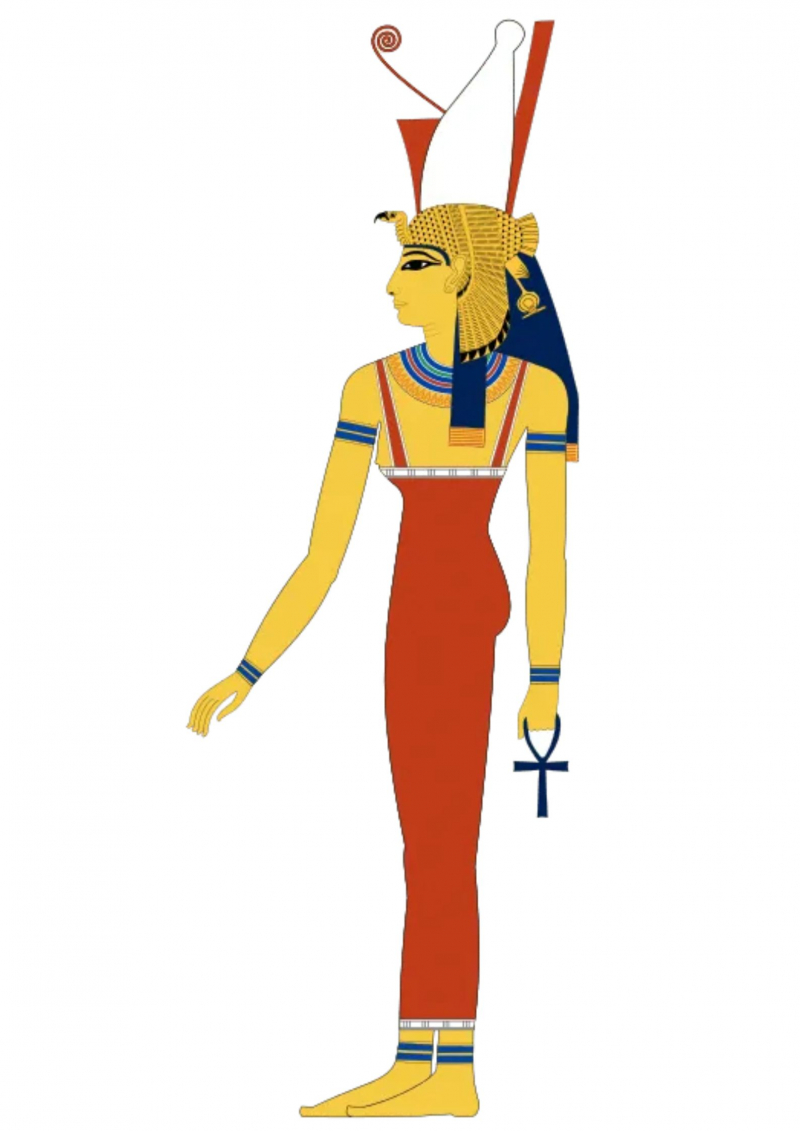
Mut wearing the double crown and a royal vulture headdress - Wikimedia Common -
Hathor is called the Egyptian Mother Goddess or Goddess of Love. From the Old Kingdom (about 2700 BC) or earlier to the end of Egyptian history, she was worshiped (circa AD 400). She was one of the most potent and well-known of Egypt's 42 state deities.
Hathor is said to have a kind disposition and be empowered by creative powers. She allegedly repaired what Sekhmet had ruined. As a result, she was always portrayed as a cow deity in one or more forms. She was referred to as "Lady of the Stars" for her heavenly abilities. She is frequently referred to as the mother of all Egyptian pharaohs and her father is the sun deity Ra.
She may be portrayed as a cow in works of art, as in the sculpture of her munching on papyrus leaves and nursing Amenhotep II from the Hathor shrine of Tuthmosis III, or in human form with hairstyles that resemble the Mesopotamian omega symbol. She is occasionally associated with lions and is also seen in the capitals of architectural columns. The snake and the papyrus reed are other emblems. She was immensely well-liked in Greco-Roman society, and many aspects of Aphrodite were modeled after her.
Hathor, also known as the Mistress of the West, ushered the dead into the afterlife. She represented maternity and female love because she was born of Ra. She was prayed to by the ancient Egyptians as the goddess of dancing and music. She is regarded as a blessing since she assists pregnant and laboring women. She was also known as the Lady of Heaven, Earth, and the Underworld and was affectionate, modest, and kind to both the dead and the living.
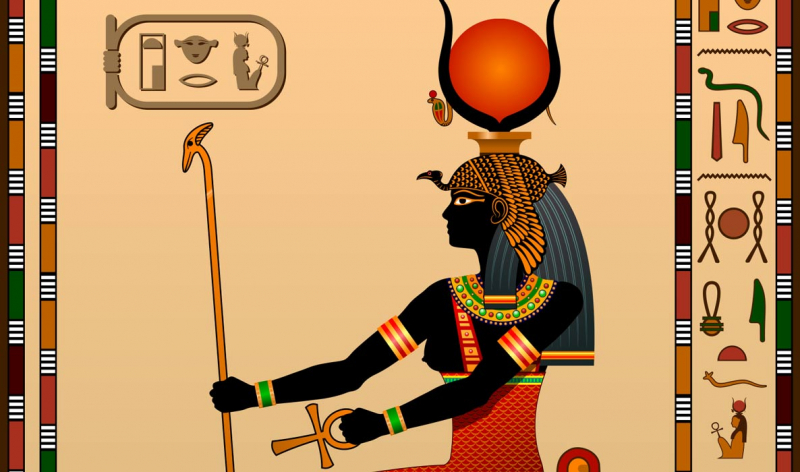
Hathor: Goddess of Joy and Motherhood Near the Nile - Ancient Origins 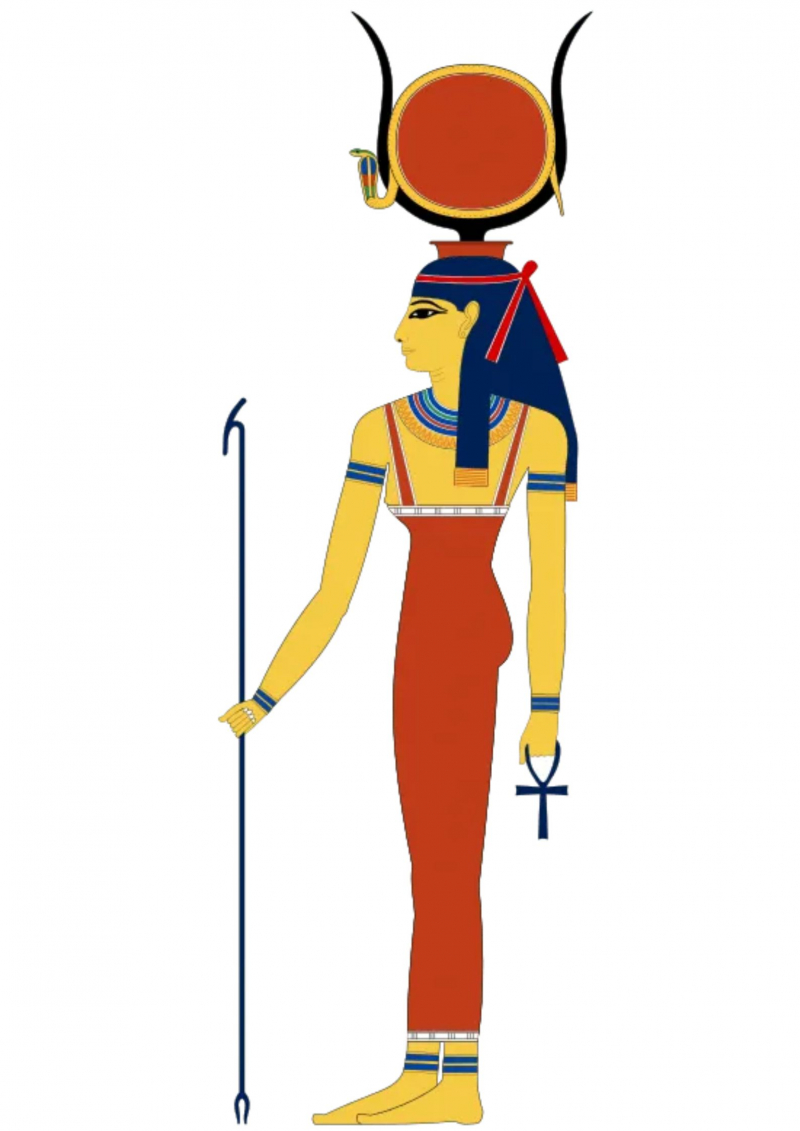
Hathor’s most common iconography - Wikimedia Common -
The ancient Egyptians placed great value on cats and even revered them as demi-deities. In addition to guarding the crops and preventing the disease from spreading by eliminating rodents, they were also believed to be the physical manifestation of the goddess Bastet. The goddess of safety, pleasure, and wellbeing was known as Bastet. She had a slim female body and a cat's head.
Bastet was the wife of Ptah, the mother of Mihos, the sister of Sekhmet, and the daughter of Ra. Bastet has been revered as a god since the Second Dynasty, primarily in Lower Egypt. Over time, her appearance and abilities evolved.
Every day, she was said to ride through the sky with her father, the sun god Ra. She would keep an eye on and protect him while his boat drew the sun through the sky. She would transform into a cat at night to defend Ra from his worst foe, the serpent Apep.
She was known as the Lady of the East, Goddess of the Rising Sun, and the Sacred and All-Seeing Eye because of her protecting duties. She is also known as the Goddess of the Moon and was supposed to be the moon's and Ra's eyes. Bastet is still worshiped today, and some believe her protection extends to modern cats.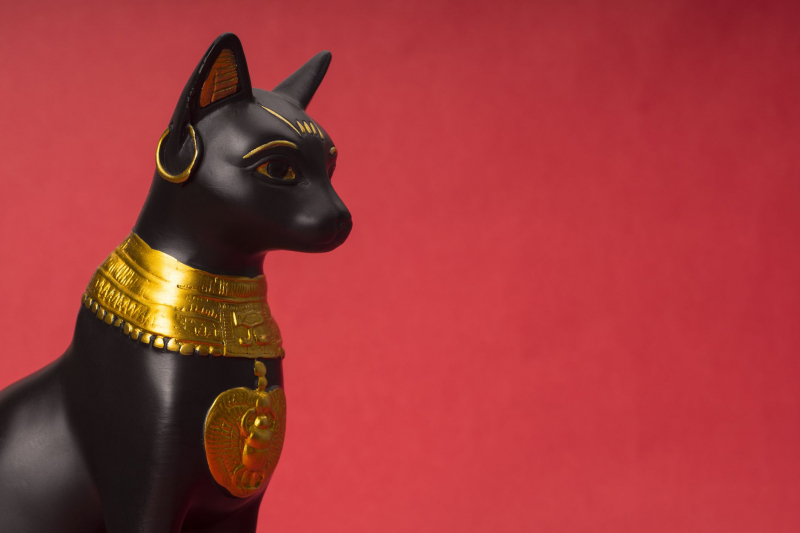
Bast/Bastet, Egyptian Cat Goddess - Learn Religions 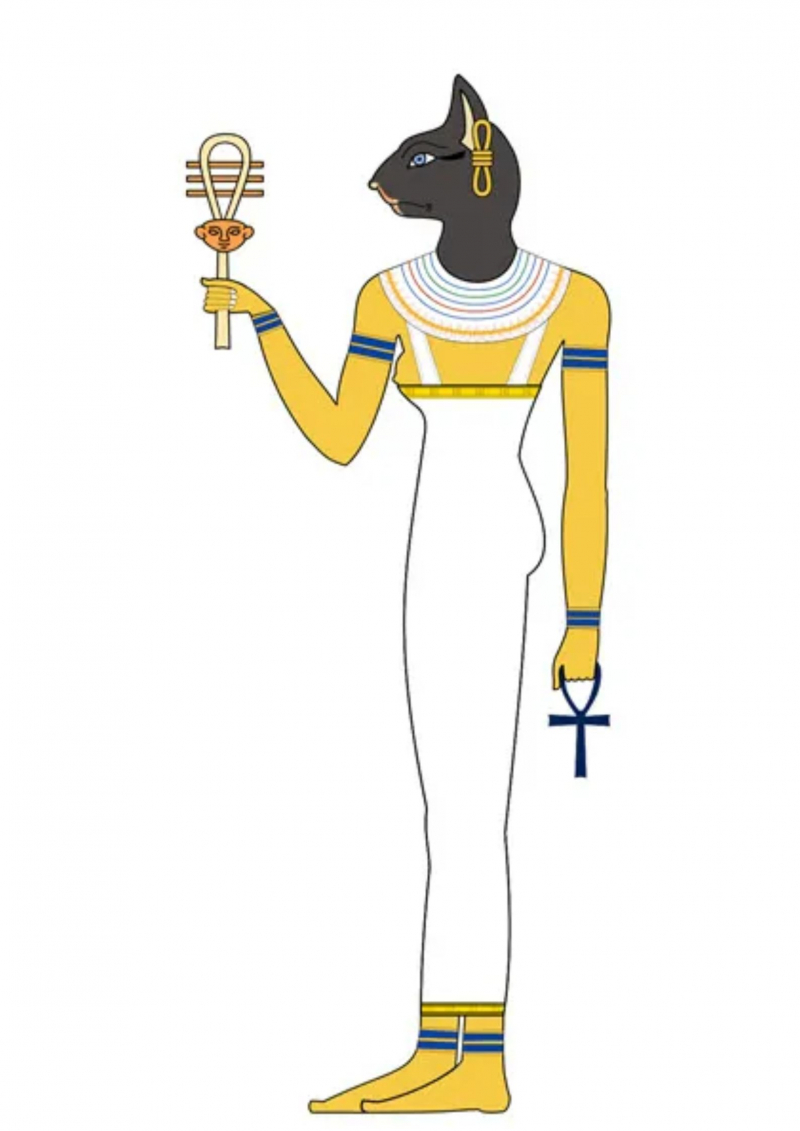
Ancient Egyptian Goddess of Feline, Bastet -
Ma'at was the goddess of truth, justice, balance, and, above all, order. She was shown in paintings as a woman either sitting or standing with an ostrich feather on her head and, in some cases, wings. Ma'at was created when Ra sprang from the seas of Nun, according to creation stories (chaos). Ma'at was thought to be Ra's daughter, and she was married to Thoth, the god of wisdom.
Ma'at, however, was more than a deity to the ancient Egyptians. She embodied the critical concept of how the cosmos was sustained. The ancient Egyptians thought the universe had order, and Ma'at was responsible for keeping everything in balance. The ancient Egyptians gained a strong sense of morality and justice as a result of this.
Ma'at had a crucial role in reaching the Afterlife. In accordance with Egyptian mythology, everyone was required to go through the Hall of Judgment after the death of the body, where their hearts were measured against Ma'at's feather of truth. The deceased could continue their trip to the Afterlife if their heart was in harmony with Ma'at's feather. If not, their adventure was over. This had an impact on ancient Egyptian daily life.
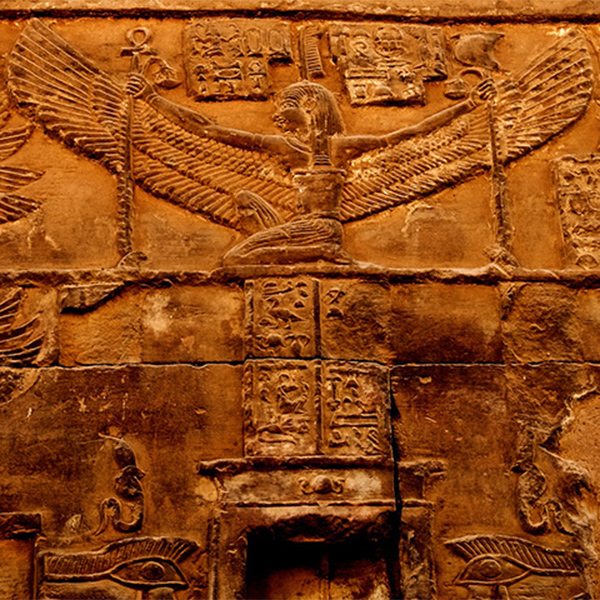
The deity Ma’at, in winged form, is seen on the side of the Temple of Sobek, Egypt. - Carlos Bustamante/Flickr 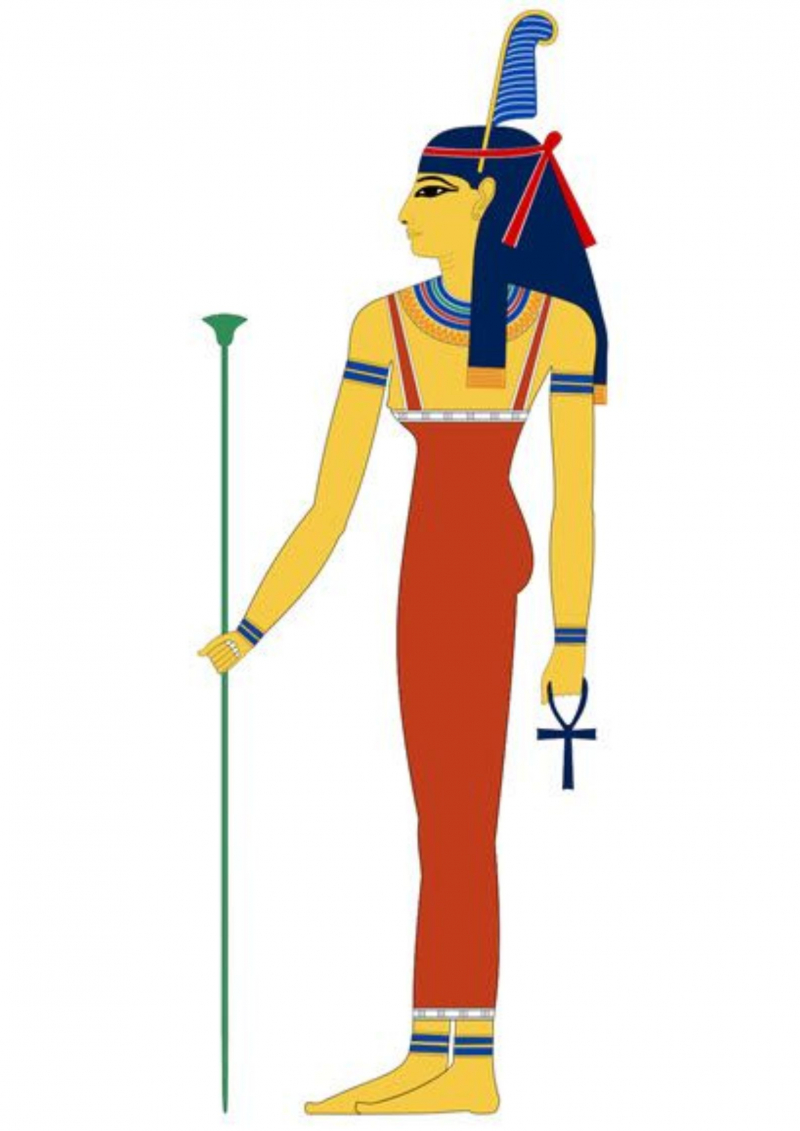
Ancient Egyptian Goddess Maat -
Nut (pronounced "newt") is a goddess of the skies and heavens in ancient Egyptian mythology. She was the offspring of Tefnut, the goddess of heat, and Shu, the god of life's breath. She was typically portrayed as a female bending over the Earth, her feet in the east and her head in the west. Sometimes, she was portrayed as a celestial cow. She belonged to Heliopolis' cosmogony, which is a hypothesis about the universe's creation.
She was regarded by the ancient Egyptians as a protector of her husband, the Earth deity Geb, from the night sky. The sun god Ra is said to have passed through her according to myths; she is said to have sucked him up at night and then given birth to him every morning. Thoth later took Ra's seat at night. She was frequently linked to sarcophagi and coffins because she guarded the deceased until their resurrection in the Afterlife.
Ra prohibited Nut from giving birth during the official calendar year after discovering that she was expecting five children. There were only 360 days in the ancient Egyptian calendar's year, divided into 12 months that each had 30 days and 24 hours. Thoth, the deity of the moon, writings, and sciences, as well as the messenger and recorder of the gods, the master of wisdom, and the patron of scribes, was consulted for assistance. According to legend, Thoth was secretly in love with Nut and immediately offered his help when she did. Nut was given five more days to give birth to her five children, Osiris, Isis, Seth, Nephthys, and Horus the Elder thanks to a dice roll by Thoth with the moon. The holy community did not accept these kids and saw them as outsiders.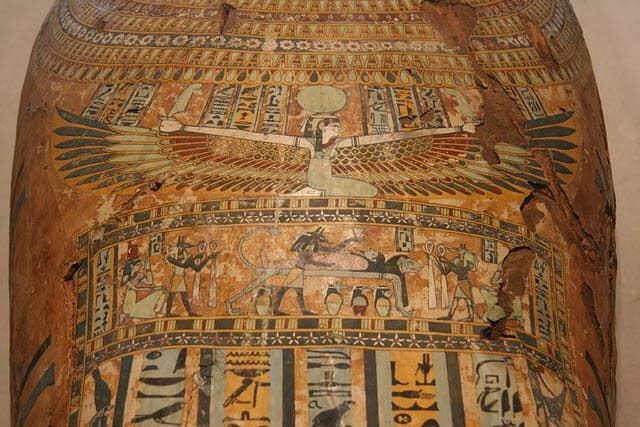
A portrait of the Egyptian Goddess with her wings spread around the coffin 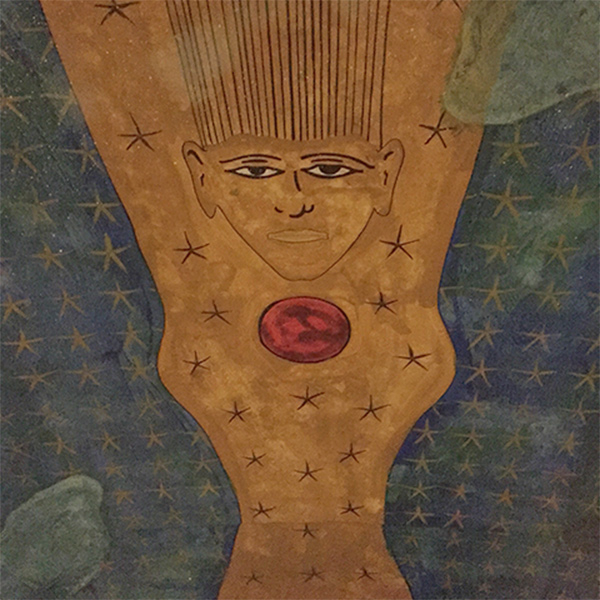
Nut on the ceiling of the underground tomb in the Rosicrucian Egyptian Museum. -
Isis, the goddess of magic and healing, played a significant role in ancient Egyptian religion. Although the ancient Egyptians referred to her as Aset, she is now more commonly recognized by her Greek name, Isis. Her headpiece, which is generally a throne, reflects the fact that her name translates to "Queen of the Throne." She is also sometimes shown with the goddess Mut's vulture headdress, and at other times, a disk with horns on it, which is a symbol of the goddess Hathor. She absorbed their characteristics and adopted their headdresses. Isis can also be viewed as a winged goddess who, when she visited her husband in the underworld, brought new air there.
Isis was the sister and wife of Osiris, the deity of the underworld. It is reported that she and Osiris were in love even when she was still in the womb. Isis was also the mother of Horus, the pharaoh's guardian. The most famous Isis narrative begins when Seth, Osiris' jealous brother, dissected him and spread his body parts over Egypt. According to ancient holy legends, the other deities were so impressed with Isis' commitment to locating her beloved husband that they assisted her in resurrecting him.
Because she possessed so many varied abilities, Isis was immensely significant to the ancient Egyptians. She was both the bringer of magic and the defender of women. Isis first served as Osiris's sidekick, but through adoration over millennia, she evolved into the universe's ruler and the personification of cosmic order. She was thought to have authority over fate itself by the time of the Roman era. Even containers in the form of the goddess existed, each with a pouring hole in one of her nipples. It was believed that she would grant the milk poured through these cups magical protection if a spell was also cast.
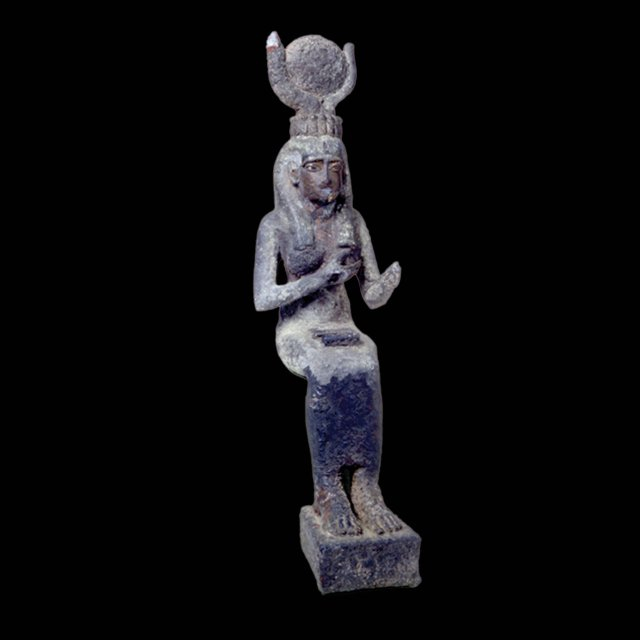
RC 1652 Isis Figure at the Rosicrucian Egyptian Museum. 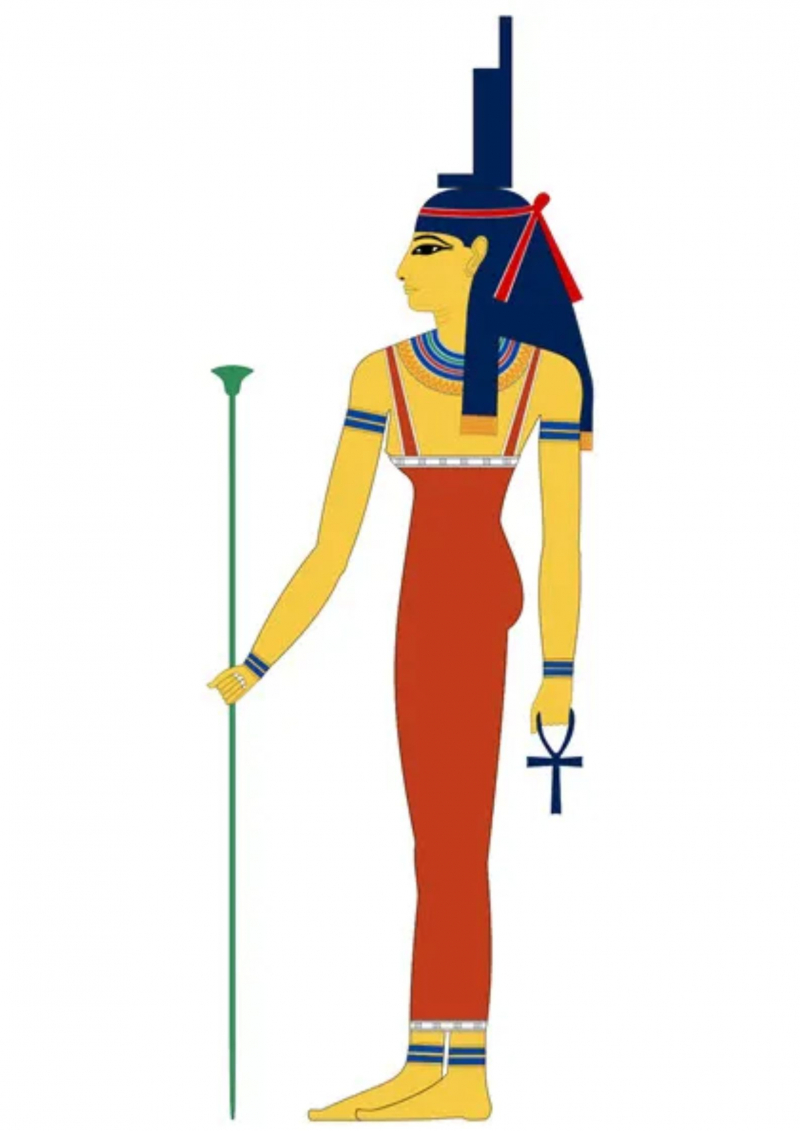
Ancient Egyptian Goddess of Royalty, Isis -
The Great Female, also known as Taweret (Taueret, Taurt, Toeris, Ipy, Ipet, Apet, Opet, Reret), was a goddess of childbirth and maternity in ancient Egypt who also served as a protector of women and children. Like Bes, she was a popular divinity who protected the mother and her unborn child as well as a powerful demonic combatant.
She was shown as a cross between a crocodile, a hippopotamus standing on its hind legs, and a lion, with huge breasts. She had a hippopotamus's head and body, a lion's paws, and a crocodile's back, in contrast to the composite demoness Ammut. She was a demon since each of these creatures was a man-eater.
She was regarded as a goddess because of her guardian role. Taweret was said to be protective of Egyptian children, just as a mother hippo is of her young. She frequently appeared carrying either the ankh hieroglyph of life or the sa hieroglyph of protection. She was believed to aid women in giving birth and frighten away demons that could harm the mother or infant.
Egyptians also viewed hippos as representations of rebirth and regeneration since they live in the rich mud of the Nile. The complex form of the goddess Taweret, who guards mothers during childbirth, is another manifestation of the birth-related component of the hippo's abilities.
She was also associated with fertility. She was the goddess of harvests as well as the goddess of female sexuality and pregnancy. She was associated with the goddess Hathor in this capacity. As a fertility goddess, she was strongly tied with the Nile's flood, particularly at Jabal al-Silsila.
Taweret amulets were popular, especially among pregnant mothers due to Taweret's protecting properties. These were even discovered at Akhetaten - despite his attempts to replace Egypt's gods and goddesses with the Aten, Akenaten had no authority to prevent his people from requiring the protection of this goddess (or of Bes). Her image has also appeared on cosmetic products, headrests, and jewelry for women.
The early stages of infancy and childbirth were considered to be extremely dangerous for both mother and child. The main defense against these dangers was magic; various malevolent spirits needed to be frightened away, and gods needed to be summoned to guard the weak. One of the tools employed was these magic knives, often known as apotropaic (working to fend off evil) wands. They are typically crafted from hippopotamus ivory, soliciting the help of that formidable animal in the fight against evil.
Taweret was a domestic deity rather than a pharaonic deity, and she was extremely popular among ordinary Egyptians. She wore a short, cylindrical headdress topped by two plumes, or she donned Hathor's horns and the solar disk. Although she was most popular in later periods, she first appeared in the Old Kingdom as the pharaoh's mother, offering to nurse him with her heavenly milk. Later, the pharaoh Hatshepsut represented the goddess attending to her birth alongside other childbirth deities.
Taweret was associated with the northern sky in Egyptian astronomy. In this capacity, she was known as Nebetakhet, the Mistress of the Horizon, as depicted in the ceiling mural of the constellations in Seti I's tomb. She was considered to keep evil away from the northern sky, which the Egyptians associated with darkness, cold, mist, and rain. She was revealed to represent the circumpolar stars Ursa Minor and Draco, which never set. The seven stars that go down her back are the Little Dipper stars. She was said to be a northern protector, stopping all who were unworthy before they could pass her by.
There is a single figure that occurs in every ancient Egyptian astronomical design, always larger than the others and most often in the middle of what appears to be a horizontal parade of figures. Taweret, also known as "The Great One," is a goddess who is seen here as a pregnant hippopotamus standing straight up. It is obvious that this picture is a representation of a northern constellation that is, at least loosely, related to our current Draco the Dragon constellation.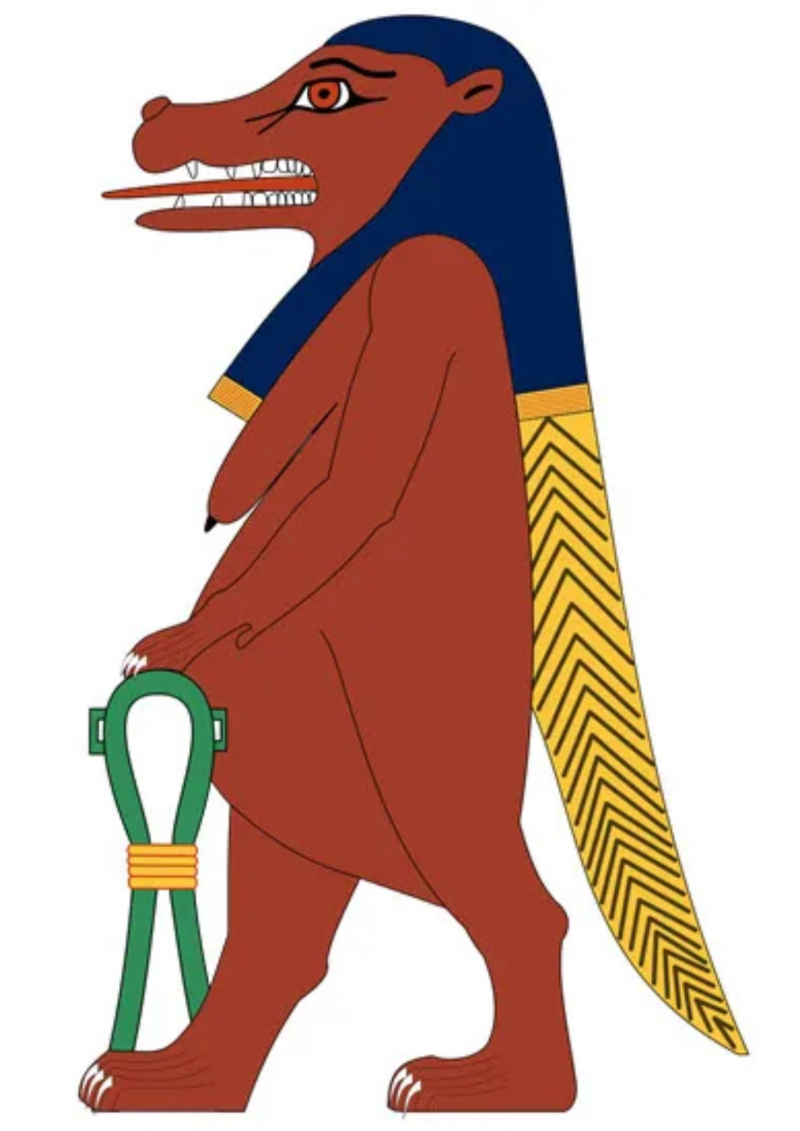
Egyptian Goddess Taweret depicted as a pregnant hippopotamus 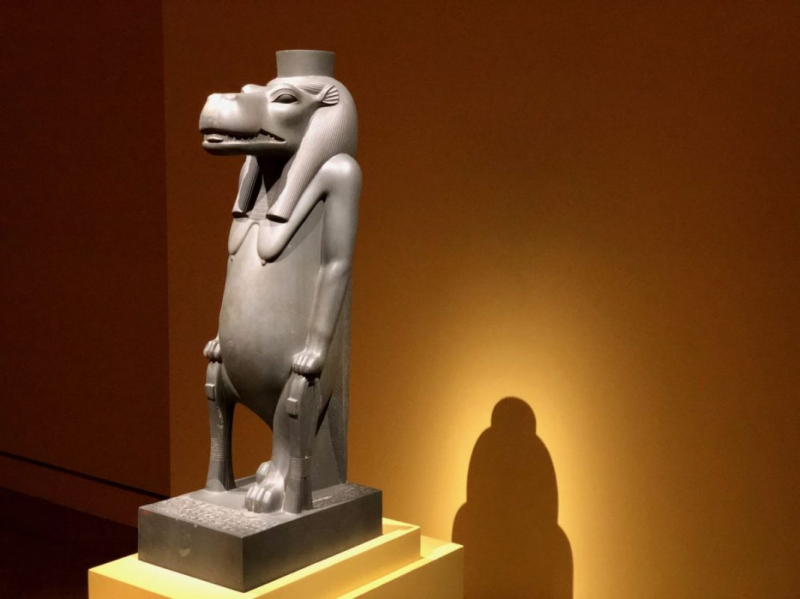
new.artsmia.org -
Since the sky is the "head" of the world, Nephthys, or "Mistress of the House," was both the goddess of the air and the leader of the household. Along with Ptah-Tanen, she occasionally served as Lower Egypt's representative.
Nephthys was Isis' sister in Egyptian mythology and the offspring of Geb (Earth) and Nut (Sky). Despite some beliefs to the contrary, Nephthys was barren. She was Seth's sister, his wife, and the mother of Anubis. She was therefore linked to grief and vultures, a bird that the Egyptians thought were incapable of having offspring.
Nephthys assisted Isis in reviving Osiris after he had been killed by Seth, which is why she is frequently seen in tombs and on coffins as a guardian of the dead, particularly in relation to the organs kept in canopic jars. The sole physical difference between Nephthys and Isis is their headdresses. Nephthys is typically seen carrying a basket, but she is also occasionally portrayed as a bird or a woman in grief.
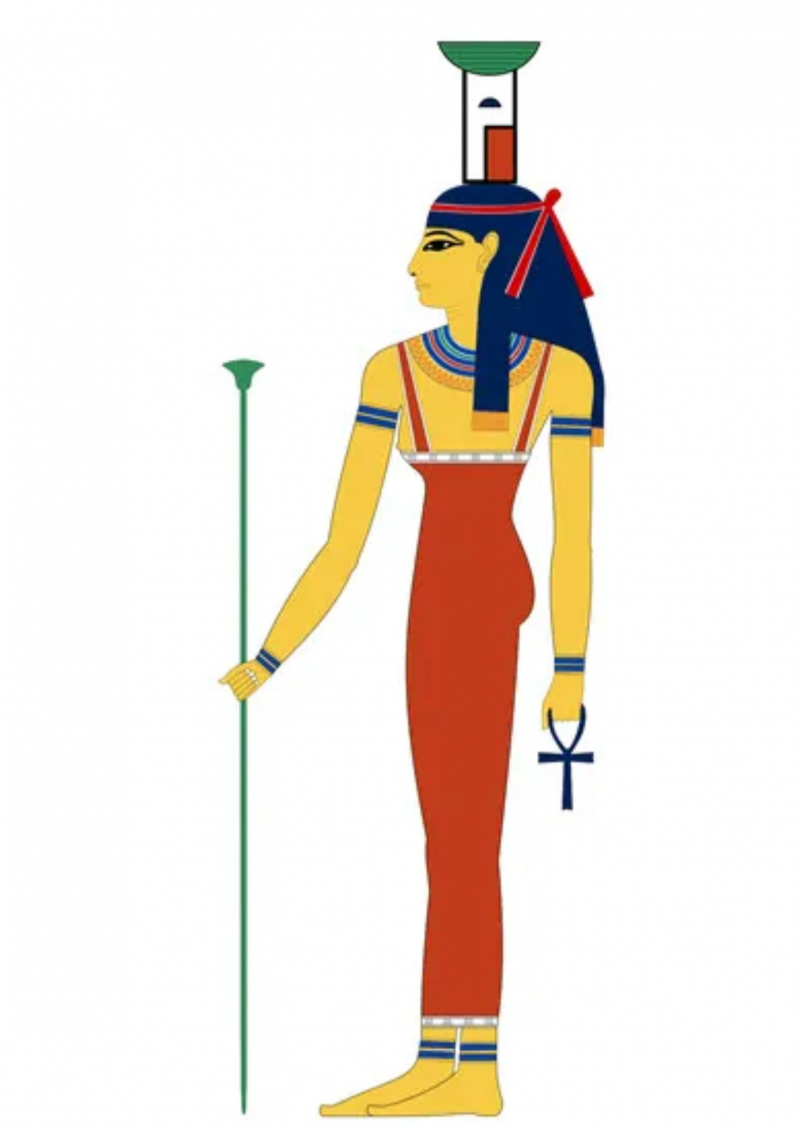
A portrait of Ancient Egyptian Goddess Nephthys 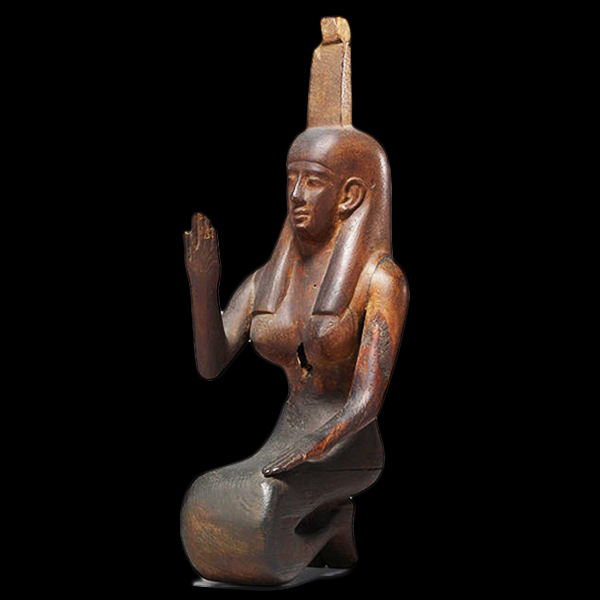
Nephthys statue at the Walters Art Museum in Baltimore. -
The goddess Neith had one of the longest periods of importance in the ancient Egyptian pantheon, being worshiped from the Predynastic era until the beginning of Roman control. In addition to being a burial goddess, she was the goddess of creation, wisdom, weaving, and war.
Neith was thought to have been there at the creation of the world, and some even referred to her as the mother of Ra, the solar god who created everything else. She is also thought to be the mother of Sobek, the crocodile god. Many people revered her as the creator of life in this light.
It was thought that because she was the goddess of wisdom, the other gods would go to her for advice on how to resolve their conflicts. In addition to her affiliation with combat, Neith was also connected to weaving, which offered her a variety of duties in the afterlife. She was rumored to dress the foes of the dead in woven cloth and shoot arrows at them.
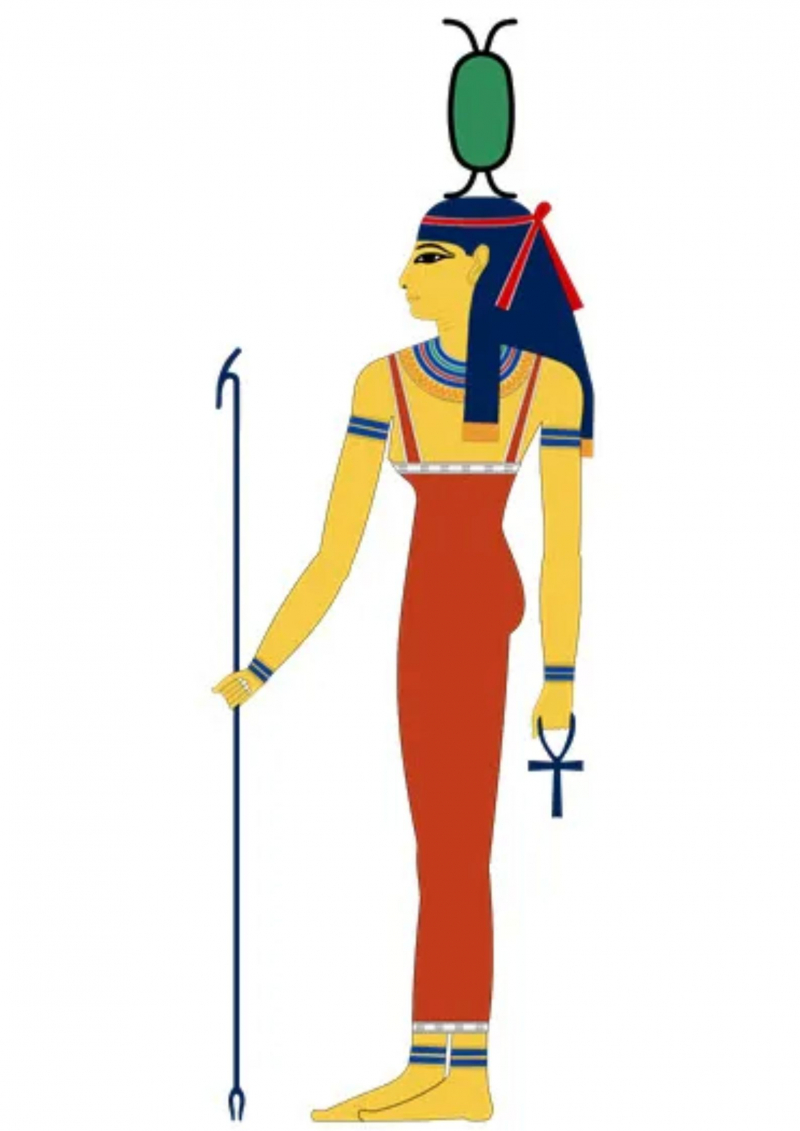
A portrait of Ancient Egyptian Goddess Neith 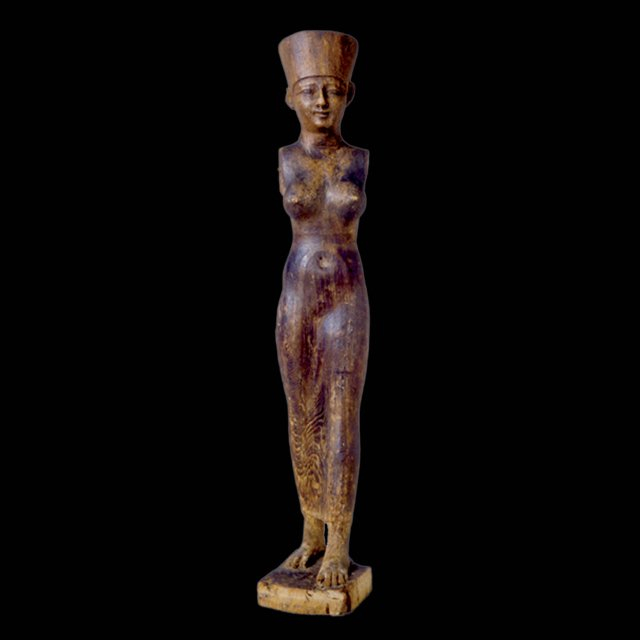
RC 1806 Neith statue at the Rosicrucian Egyptian Museum. -
Nekhbet is a regional deity who first appeared in early predynastic mythology. This goddess was known by the ancient Egyptians as the protector of Nekheb (El Kab). She later rose to become the protector of Upper Egypt. She later rose to the position of the second patron of the united Ancient Egypt. Nekhbet was revered in Egyptian religion as the defender of all the pharaohs of Upper Egypt. The vulture bird stood in for the powerful deity.
Nekhbet is shown in ancient Egyptian art as a winged goddess with her wings spread outward as a sign of protection. A representation of the goddess is a vulture god with extended wings. The white vulture goddess of ancient Egypt is known as the "Mother of Mothers, who has existed from the Beginning." Nekhbet is associated with funeral images and the cult of Osiris in ancient writings. The goddess is thought to have been present when Osiris was born. The pharaoh and the non-royal dead were watched over and safeguarded by Nekhbet. She was frequently pictured as a vulture flapping its wings in front of the subject she was observing. The other made a ground-facing gesture. It stood for the deceased person's defense.
Because Nekhbet was the patron deity of birth, the ancient Egyptians continued to associate her with childbirth. According to certain indicators, she was holding a circular object in her claws. They also portrayed Nekhbet sitting atop a round item. Shen, the round ring, was the name given to this artifact by the ancient Egyptians. According to legend, anything inside the circle was safe for eternity. Furthermore, it represented divine might. Similarly, the lotus or water lily was another image of the deity. It represented Upper Egypt and signified the sun of creation, renewal, and rejuvenation. In Upper Egypt, the goddess's headgear depicted the White Atef crown. Nekhbet, the goddess of the sky, was also associated by the Egyptians with the moon and the sun. When they referred to her as the "Eye of Ra," the ancient Egyptians established this connection.
The White Scavenger Vulture is another name for the vulture that lived in ancient Egypt. The wings of adult vultures have black flying feathers in addition to their white body plumage. White vultures were protected by law because the rulers regarded the birds as royalty. Vultures were revered as great mothers by the ancient Egyptians. Consequently, they decided to use a bird as a symbol for such a significant goddess. As a result, the phrase "Pharaoh's chicken" was created. The ancients also thought that birds could procreate without males because they were all female. White vultures so represented purity. Ancient symbols frequently show Egyptian queens with vulture headdresses, which stood in for Nekhbet.
Nekhbet was originally the goddess of the White Crown, or southern Egypt, represented by a white vulture. Wadjet, on the other hand, was the deity of Lower Egypt's Red Crown in the north. In the future, Lower and Upper Egypt were combined. Nekhbet and Wadjet were paired together by the ancients. The two goddesses were collectively known as the "Two Ladies" by the Egyptians. Additionally, Wadjet and Nekhbet are frequently referred to as the "Two Ladies" in ancient religious Egyptian texts. Wadjet was regarded as a tenacious defender. They also saw Nekhbet as a maternal, gentle, and defender of Egypt. Additionally, an image of the two protective winged goddesses can be seen on the ceilings of a temple in Kom Ombo (Ombus). Wadjet wears the Red Crown (Deshret) of Lower Egypt, whereas Nekhbet dons the White Atef crown.
The goddess is portrayed in Egyptian artwork as the future king's nurse. She frequently tends to the royal infant and breastfeeds him. Nekhbet was also known as the "Mother of Mothers" by the ancient Egyptians since she was the fabled mother of all Egyptian kings. She also guarded the remains of rulers. She assumed the form of a vulture and spread her wings to protect the corpses. In numerous images found in tombs and burial chambers, she is seen as Osiris, the deity of the underworld. She became the most well-known goddess of Egypt due to her connection to the royal family. Furthermore, the monarchs had the Shem, a Nekhbet emblem, engraved on their crowns. They saw it as a symbol of protection and direction. Furthermore, ancient legends suggest that Nekhbet shielded Horus and directed him in his endeavor to recover the throne during the great fight between Horus and Set.
During the New Kingdom period, the strong Mother Goddess Mut absorbed Nekhbet. Mut often donned a regal vulture crown that represents the “Two Ladies”.
The strong goddess guarded the sun god as he traveled over the sky. Another important job of the goddess was to protect Ra from Apep, the snake demon. All of this established Nekhbet as a strong and important goddess. The goddess was associated with protection, childbirth, and fertility by the royals and the people. Her symbols also indicated divine power and protection. In modern culture, the goddess is depicted as a watchful white vulture.
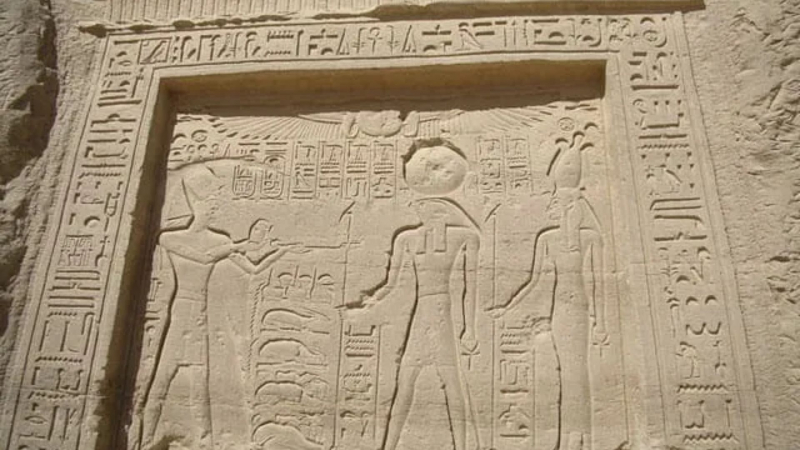
A relief from the temple of Egyptian Goddess Nekhbet 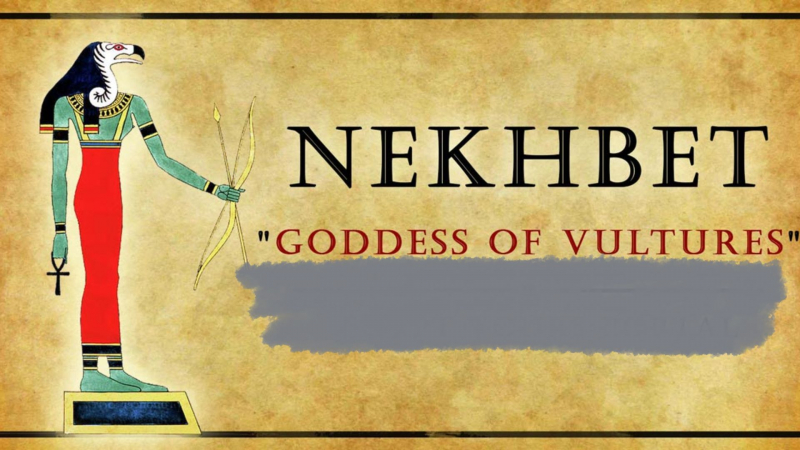
Egypt Tours Portal












